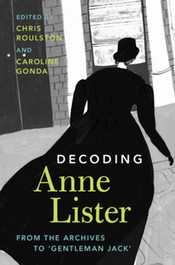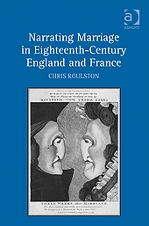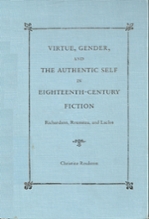 Christine Roulston
Christine Roulston
Decoding Anne Lister: From the Archives to ‘Gentleman Jack'
This is the first edited collection of essays on the nineteenth-century diarist Anne Lister. Now recognized as a UNESCO world heritage document, Lister's five-million-word diaries are paradigm-shifting in terms of their range of material, from social commentary and politics to breath-taking travel accounts. However, they have become most well-known for their explicit descriptions of same-sex practices, written in code and constituting a significant portion of their content. The essays here address the variety and interdisciplinarity of the diaries: Lister's negotiations with her own 'odd' identity, her multiple same-sex relationships, her involvement in politics and her lifelong thirst for knowledge. It also addresses Lister studies in popular culture through the successful Gentleman Jack BBC-HBO series, including an interview with Sally Wainwright and foreword by author Emma Donoghue. 2023, Cambridge University Press.
 Narrating Marriage in Eighteenth Century England and France
Narrating Marriage in Eighteenth Century England and France
In the eighteenth century, when the definition of marriage was shifting from one based on an hierarchical model to one based on notions of love and mutuality, marital life came under a more intense cultural scrutiny. This led to paradoxical forms of representation of marriage as simultaneously ideal and unlivable. Chris Roulston analyzes how, as representations of married life increased, they challenged the traditional courtship model, offering narratives based on repetition rather than progression. Beginning with English and French marital advice literature, which appropriated novelistic conventions at the same time that it cautioned readers about the dangers of novel reading, she looks at representations of ideal marriages in Pamela II and The New Heloise. Moving on from these ideal domestic spaces, bourgeois marriage is then problematized by the discourse of empire in Sir George Ellison and Letters of Mistress Henley, by troublesome wives in works by Richardson and Samuel de Constant, and by abusive husbands in works by Haywood, Edgeworth, Genlis and Restif de la Bretonne. Finally, the alternative marriage narrative, in which the adultery motif is incorporated into the marriage itself, redefines the function of heteronormativity. In exploring the theoretical issues that arise during this transitional period for married life and the marriage plot, Roulston expands the debates around the evolution of the modern couple. 2010, Ashgate.
 Virtue, Gender and the Authentic Self in Eighteenth-Century Fiction
Virtue, Gender and the Authentic Self in Eighteenth-Century Fiction
This book analyzes the ways in which female virtue was tied to a new concept of authenticity in 18th-century sentimental fiction, producing a redefiniton of gender relations on the one hand and a re-examination of the value and place of fictional narrative on the other. As the old values of the aristocracy were being overturned and it was no longer possible simply to equate personal worth with rank or title, a new narrative protagonist was born--someone who was authentic, virtuous, and usually female. New questions arose at the same time: What kind of language could represent this authentic self? How far should the virtuous subject be tested, and what is the role of the reader in the process? With in-depth analysis of four important 18th-century epistolary novels--Pamela, Clarissa, La Nouvelle Héloïse, and Les Liaisons dangereuses--Roulston shows that the female protagonist in these works is forced to protect her body and her writing from violation. She argues that a disturbing equation emerges between revealing the female body and revealing a female sensibility and, therefore, between pleasure--both narrative and visual--and virtue. Concluding with Les liaisons dangereuses and the end of the sentimental narrative tradition, Roulston questions even the possibility of sustaining authentic language. In these four texts, she says, writing becomes an ideological as well as a literary tool for the establishment of new cultural values. 1998, University Press of Florida.



